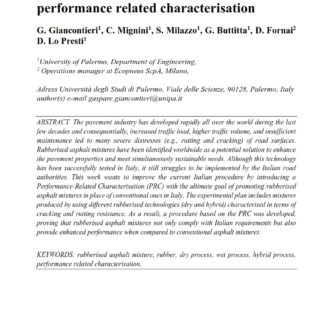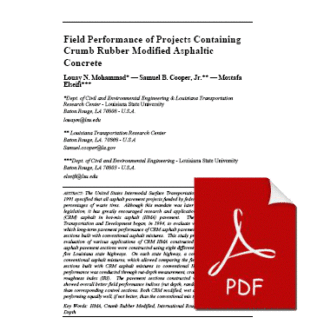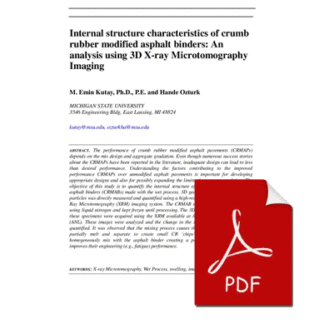Description
The performance of crumb rubber modified asphalt pavements (CRMAPs) depends on the mix design and aggregate gradation. Even though numerous success stories about the CRMAPs have been reported in the literature, inadequate design can lead to less than desired performance. Understanding the factors contributing to the improved performance CRMAPs over unmodified asphalt pavements is important for developing appropriate designs and also for possibly expanding the limits of aggregate gradation. The objective of this study is to quantify the internal structure of the crumb rubber modified asphalt binders (CRMABs) made with the wet process. 3D geometry of crumb rubber (CR) particles was directly measured and quantified using a high-resolution synchrotron based XRay Microtomography (XRM) imaging system. The CRMAB samples were instantly frozen using liquid nitrogen and kept frozen until processing. The 3D internal structure images of these specimens were acquired using the XRM available at Argonne National Laboratory (ANL). These images were analyzed and the change in the size of particles was directly quantified. It was observed that the mixing process causes the crumb rubber particles to partially melt and separate to create small CR ‘chips’. These small CR ‘chips’ homogeneously mix with the asphalt binder creating a polymer-like structure, which improves their engineering (e.g., fatigue) performance.







